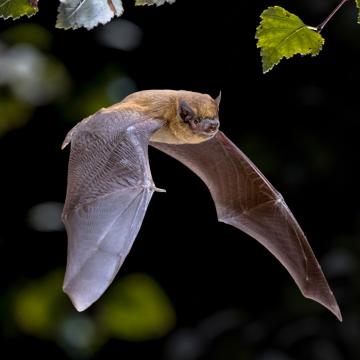Pipistrellus pipistrellus)
Summary
The UK's smallest bat, the pipistrelle is also its most common, seen on the wing throughout April to October.
You will often catch sight of these bats on the periphery of the wetlands at dusk, and they are also common visitors to the gardens surrounding the nature reserve.
The pipistrelles flight is rapid with lots of twists and turns as it uses the technique of echolocation to navigate and find food in the dark.
Common Pipistrelle facts and statistics
• All bats are nocturnal
• Weighs between 3-5 g
• Measures around 4 cm
• Wingspan between 20-23 cm
• Can eat up to 3,000 insects each night
How to identify
Bats can be very difficult to identify unless you are an expert, but the pipistrelle is one of the smallest of the UK bats which helps in identification.
It is dark golden brown with a lighter underside and a dark brown face.
Conservation status
Protected in the UK under the Wildlife and Countryside Act, 1981.
Habitat
Widespread:
• Grassland
• Heathland and moorland
• Farmland
• Wetlands
• Woodland
• Towns and gardens
Ways to help
If you want to support your local bat population, why not buy or build your own bat box. For more information on how to support bats, visit the Bat Conservation Trust.
Common Pipistrelle sightings at Grimsargh Wetlands







